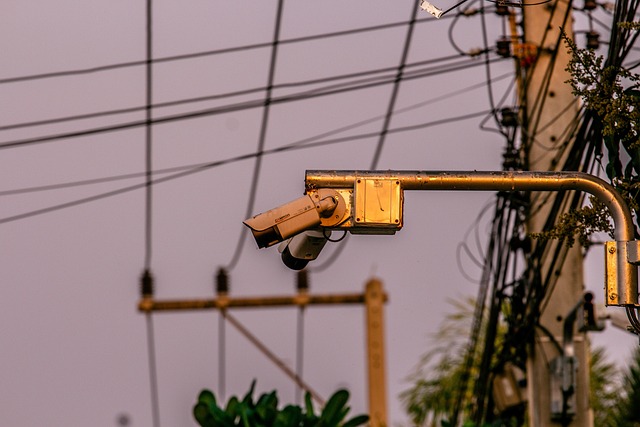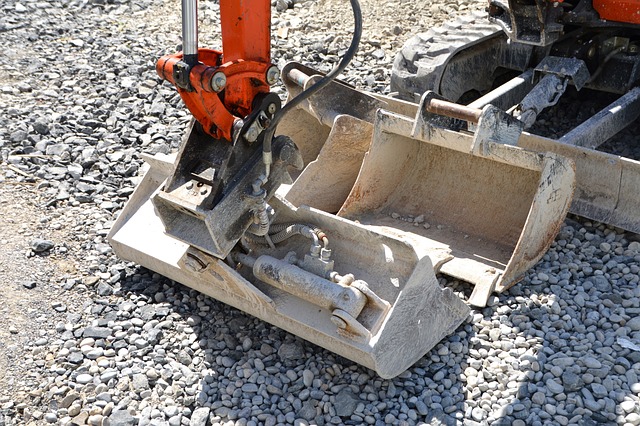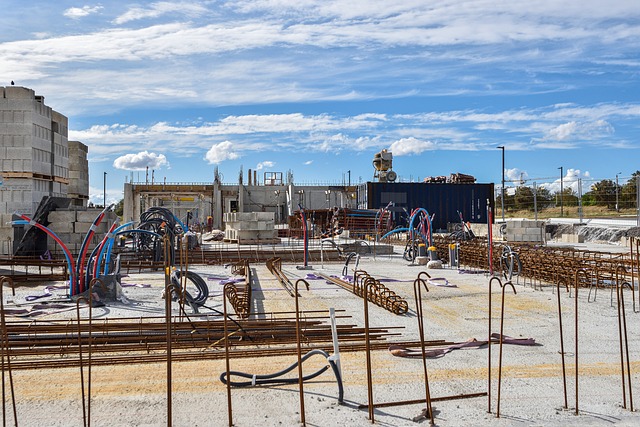Foundation cracks, caused by various factors like soil settlement or clay movement, pose structural risks if left unaddressed. Regular, professional foundation inspections are crucial for identifying crack types and causes, enabling appropriate solutions like underpinning or mudjacking. These inspections preserve integrity, prevent costly damage, and range from early crack sealing to structural reinforcement. Advanced techniques like GPR and thermal imaging offer non-invasive assessments. Soil analysis is key, as soil type and moisture content impact foundation stability. Regular checks detect settling, cracking, and water damage, allowing for targeted repairs and long-term protection against environmental factors.
Foundation cracking and settling can be detrimental to any structure, leading to costly repairs and structural instability. This comprehensive guide delves into the intricacies of preventing these issues by exploring various aspects of foundation health. From understanding the causes of cracks to implementing effective solutions, we cover everything from regular foundation inspections and early sign identification to soil analysis and hydraulic pressure management. By mastering these techniques, homeowners and professionals can ensure a solid, long-lasting foundation through proper maintenance.
Understanding Foundation Cracking: Causes and Types

Foundation cracks can be a serious issue for any structure, leading to structural damage and even safety hazards if left unaddressed. Understanding the causes and types of foundation cracking is the first step in preventing and mitigating these problems. Common causes include soil settlement, expansive clay movement, poor initial construction, and shifts in ground water levels. These factors can result in various crack types such as hairline cracks, diagonal cracks, vertical cracks, and uneven floor levels.
A thorough foundation inspection by a professional is crucial to identifying the root cause of cracking. This process involves examining the structure’s footing, walls, and floors for any signs of distress or anomalies. By pinpointing the type and severity of cracks, homeowners and builders can implement appropriate solutions like underpinning, piering, or mudjacking to stabilize and strengthen the foundation, thereby preventing further settling and cracking.
The Role of Regular Foundation Inspection

Regular foundation inspections are an essential component in preventing settling and cracking in structures. These thorough examinations allow for early detection of any potential issues, such as uneven settling, cracks in the foundation walls, or signs of water damage. By identifying these problems at their source, homeowners and professionals can take prompt action to address them before they escalate.
During a foundation inspection, experts assess the overall stability and integrity of the structure’s foundation. They look for indicators like shifting soil, improper drainage, or structural damage that could compromise the foundation’s longevity. This proactive approach enables the implementation of necessary repairs or reinforcement measures, ensuring the long-term durability and safety of the building.
Identifying Early Signs of Settlement

Settling and cracking in foundations can often go unnoticed until significant damage occurs. Regular foundation inspections are crucial to identifying early signs of settlement, which may include small cracks on the surface or uneven floors. These initial indicators could be a result of various factors such as poor soil conditions, structural issues, or improper construction practices.
During a foundation inspection, professionals look for visible signs like diagonal cracks, bulging walls, or doors and windows that do not shut properly. Identifying these issues early allows for prompt action to prevent further damage. Repairs can range from simple crack sealing to more complex structural reinforcement, depending on the severity of the settlement.
Non-Invasive Scanning Techniques for Assessment

Non-invasive scanning techniques have revolutionized foundation inspection, offering a safe and effective way to assess structural integrity without causing any damage or disruption. These advanced methods allow professionals to detect cracks, heaves, and other anomalies in foundations without breaking ground or employing destructive testing. One such technique is Ground Penetrating Radar (GPR), which uses radio waves to create detailed images of underground structures. Another is thermal imaging, which detects temperature variations that may indicate structural issues.
These non-invasive methods are particularly valuable during initial foundation inspections, historical building assessments, and regular maintenance checks. They enable professionals to identify potential problems early on, minimizing the risk of more extensive and costly repairs in the future. By utilizing these cutting-edge technologies, foundation inspectors can provide accurate and comprehensive evaluations, ensuring the longevity and stability of structures.
Soil Analysis: Key Factors Affecting Foundation Stability

Soil analysis is a critical component of foundation inspection, as it helps to determine the stability and bearing capacity of the ground beneath a structure. Several key factors affect foundation stability, including soil type, moisture content, compaction, and drainage. Different soil types have varying levels of strength and flexibility, which directly impact how well they can support a building’s weight. For instance, dense, compacted soils like clay provide better support than loose, sandy soils.
Moisture content is another critical factor, as water can significantly affect the strength and stability of soil. Excessive moisture can cause soil to expand or become more fluid, while too little moisture can lead to shrinkage and cracks. Compaction plays a significant role in ensuring that the soil beneath a foundation is dense and stable. Proper drainage is also essential to prevent water accumulation, which can erode the soil and weaken the foundation over time.
Hydraulic Pressure and its Impact on Concrete Structures

Concrete structures, including foundations, are often subjected to various environmental factors that can cause settling and cracking over time. One significant factor is hydraulic pressure, which arises from water infiltration and soil movement. When water seeps into the concrete, it expands upon freezing, creating pressure that can push against the structure. This force is especially pronounced in areas with high water tables or heavy rainfall, leading to structural damage if left unaddressed.
Regular foundation inspections are crucial to identifying early signs of settling and cracking induced by hydraulic pressure. Skilled inspectors can assess the integrity of the concrete, detect subtle changes, and recommend appropriate measures to prevent further deterioration. By understanding the impact of hydraulic pressure during these inspections, homeowners and builders can implement effective strategies to ensure the longevity of concrete structures.
Effective Solutions for Preventing Settling

Preventing settling and cracking starts with a thorough foundation inspection. This initial step is crucial as it allows for the early detection of any issues that could lead to structural damage over time. During an inspection, professionals assess the overall stability and integrity of the foundation, looking for signs of movement, cracks, or uneven settlement. By identifying these problems at their source, homeowners can implement targeted solutions before they escalate.
Effective solutions for preventing settling include reinforcing the existing foundation with additional support beams or walls, improving soil compaction around the perimeter to create a stable base, and installing drainage systems to mitigate water accumulation that can contribute to weakening the structure. Regular maintenance, such as sealing cracks and applying moisture barriers, is also vital in protecting against environmental factors that may cause settling and cracking over time.
Structural Repairs and Reinforcement Methods

Regular foundation inspections are crucial for identifying potential issues early on, allowing for prompt action to prevent settling and cracking. During an inspection, structural engineers assess the overall integrity of the foundation, looking for signs of damage, movement, or instability. They utilize advanced techniques, such as moisture meters and non-destructive testing methods, to pinpoint weak spots that might lead to cracks. Addressing these issues through targeted repairs and reinforcement is essential in safeguarding the longevity of any structure.
One common method involves repairing structural defects like cracked walls, heave-related damage, or settling gaps. This can include replacing missing or damaged concrete, injecting epoxy into cracks to stabilize them, or adding carbon fiber sheets for enhanced strength. Reinforcement techniques, such as steel bars or mesh, are also employed to strengthen the foundation and prevent further movement. These measures not only restore structural integrity but also act as a protective barrier against environmental factors that could exacerbate existing problems.
Long-Term Maintenance Tips to Ensure a Solid Foundation

Regularly inspect your foundation for any signs of damage, cracks, or settlement. This proactive step is key to preventing future issues. A professional foundation inspection should be conducted at least once a year, especially in regions with extreme weather conditions or active soil movement. During these inspections, experts can identify minor problems before they turn into significant structural damages.
To maintain a solid foundation over the long term, address any identified concerns promptly. This may include repairing cracks, adjusting drainage systems, and ensuring proper moisture levels around the structure. Regular maintenance also involves keeping the area around the foundation clear of debris and plants that could obstruct water flow or put pressure on the walls. By implementing these practices, you contribute to the longevity and stability of your home’s foundation.
